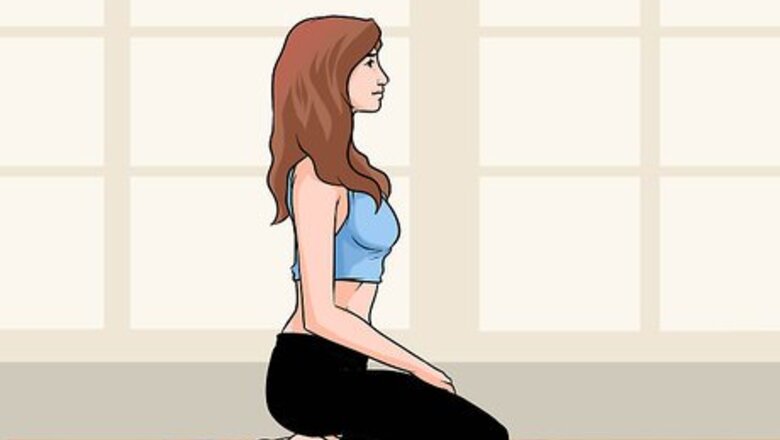
views
X
Research source
Practicing Child's Pose
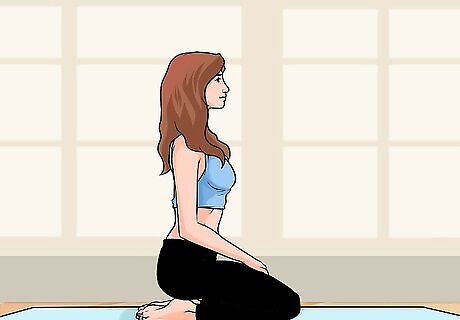
Kneel on your hands and knees. It may help to start in downward facing dog position on a yoga mat. Kneel and bring your big toes together so they're touching. Move your knees apart so they're about hip-distance apart. Some instructors recommend keeping your knees together to create expansion through the back of the body and add pressure on the abdomen. While you can do this, moving your knees apart will allow you to stretch deeper into the pose and open up your hips and spine.
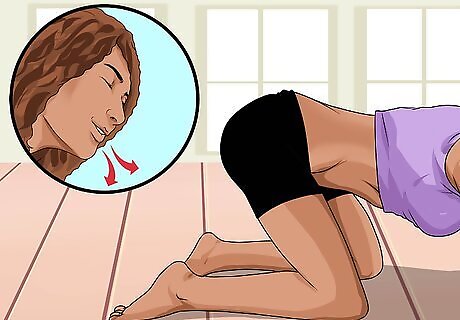
Breathe out and lower yourself down. Exhale slowly and move your hips toward your thighs so your bottom rests on your legs or ankles. Try to lengthen through the spine. Stretch through the crown of your head and sink down through your tailbone.
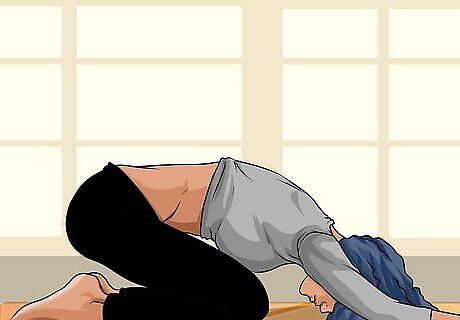
Bring your forehead to the floor. With your hands on the mat in front of you, slowly walk them away from your body so your chest lowers onto or between your thighs. Depending on your flexibility and starting position, your forehead may touch the floor. You can place a block underneath your forehead to prevent strain on your neck if you aren’t able to rest your forehead on the floor. For a more advanced entry into child's pose, engage mula bandha and lower your torso without walking your hands forward.
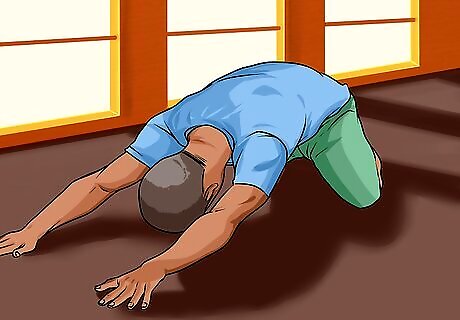
Position your arms. Child’s pose is a restorative pose, so choose your arm placement based on what feels right for you. You can bring your arms to your sides so that they stay snug with your torso. You could also bring your arms directly out in front of you. Keeping your arms in front can help you stretch and keep your tailbone lengthened.
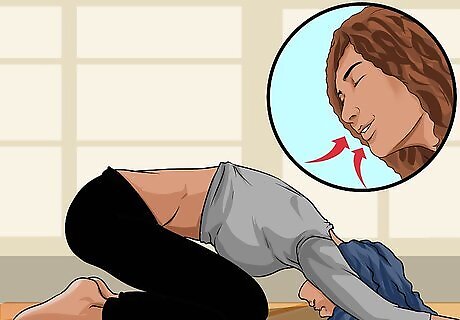
Breathe and hold the pose. Rest in child's pose while you take slow breaths into your belly. You can hold this pose for 30 seconds to a few minutes. Focus on your breathing and notice what happens with your body while in child's pose. To release the pose, inhale while slowly bringing your torso back up. You can walk your hands back toward your knees to lift your upper body, if desired. As you center your torso into an upright, seated position, see if you can feel your hips settling and anchoring your body.
Modifying Child's Pose
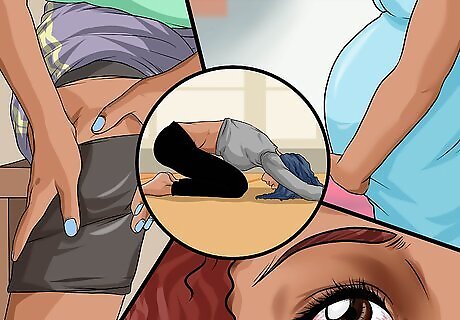
Determine if you should be doing child's pose. Child's pose is one of the most basic yoga poses and most individuals can successfully perform the pose. But, there are some people who should not do child's pose. Avoid doing child's pose or speak with your healthcare provider if: You're pregnant You have diarrhea You have ankle problems You've had a knee injury or problems with cartilage You have high blood pressure or ear or eye infections
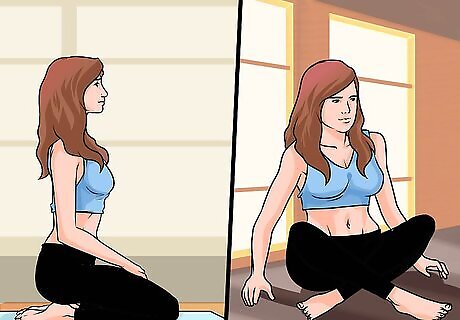
Make the pose comfortable for stiff joints. The main goal of doing this pose is to relax and focus in comfort. If you find that your joints are stiff, making the pose uncomfortable, try a modification of the pose, such as: Start by sitting cross-legged in easy pose or kneeling with your bottom on a block in hero pose or with your knees hip-width apart. This can reduce the amount of pressure you're putting on your joints. Placing a block underneath your hips while in seated position. Putting a blanket between your thighs and calves. Trying this pose in the evening since your body is stiffer in the morning and loosens up as the day goes on.
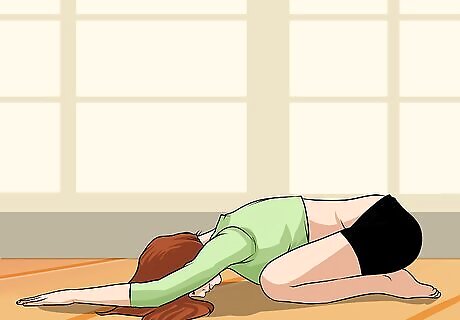
Increase the stretch of your torso. While this is mainly a resting pose, you can also do child's pose to stretch the muscles in your torso. To do so, bring your arms out in front of you while lifting your bottom up a little bit. Stretch your arms forward as you bring your shoulder blades back. Keep your arms where they are and sit your bottom back down on your heels or as far back as it will go. This stretch is also a helpful way to do the pose if you have a larger body or have trouble putting weight on your knees. You could also lift your wrists while keeping your fingertips pressed to the floor while in child’s pose.
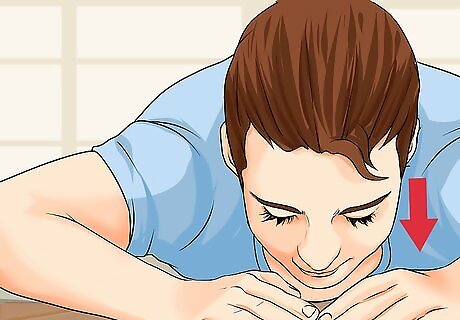
Rest your forehead on your hands. If you're having trouble bringing your forehead completely down to the floor, don't overextend yourself. You could pull a muscle. Instead, bring your arms together so that your hands meet in the middle. Ball your hands into fists and rest your forehead on your fists instead of the floor. If you're still having trouble, stack your fists on top of each other or use a block to further raise your arms off the ground.
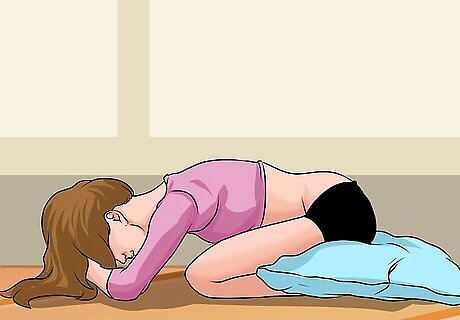
Use pillows and cushions. You can strategically place rolled up towels, small cushions or pillows to support your limbs during deep stretches. For example, you might want to fold a thick blanket under your back thighs and calves if sitting on your ankles is uncomfortable. You could also place a pillow under your bottom so that it rests on your ankles. This can help if you feel like you're unbalanced and might fall forward while doing the pose. Or, slide a bolster between your knees so that your torso rests along the spine of the bolster and creates a comfortable resting place for your head.
Try a chair modification. You can modify child’s pose using a chair, if desired. Sit in the chair with your legs spread wide apart, or with your knees together. Position another chair in front of you so that when you fold forward you can reach out the other chair. Or, place bolsters or pillows on your knees.















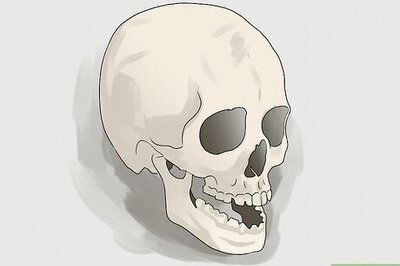

Comments
0 comment